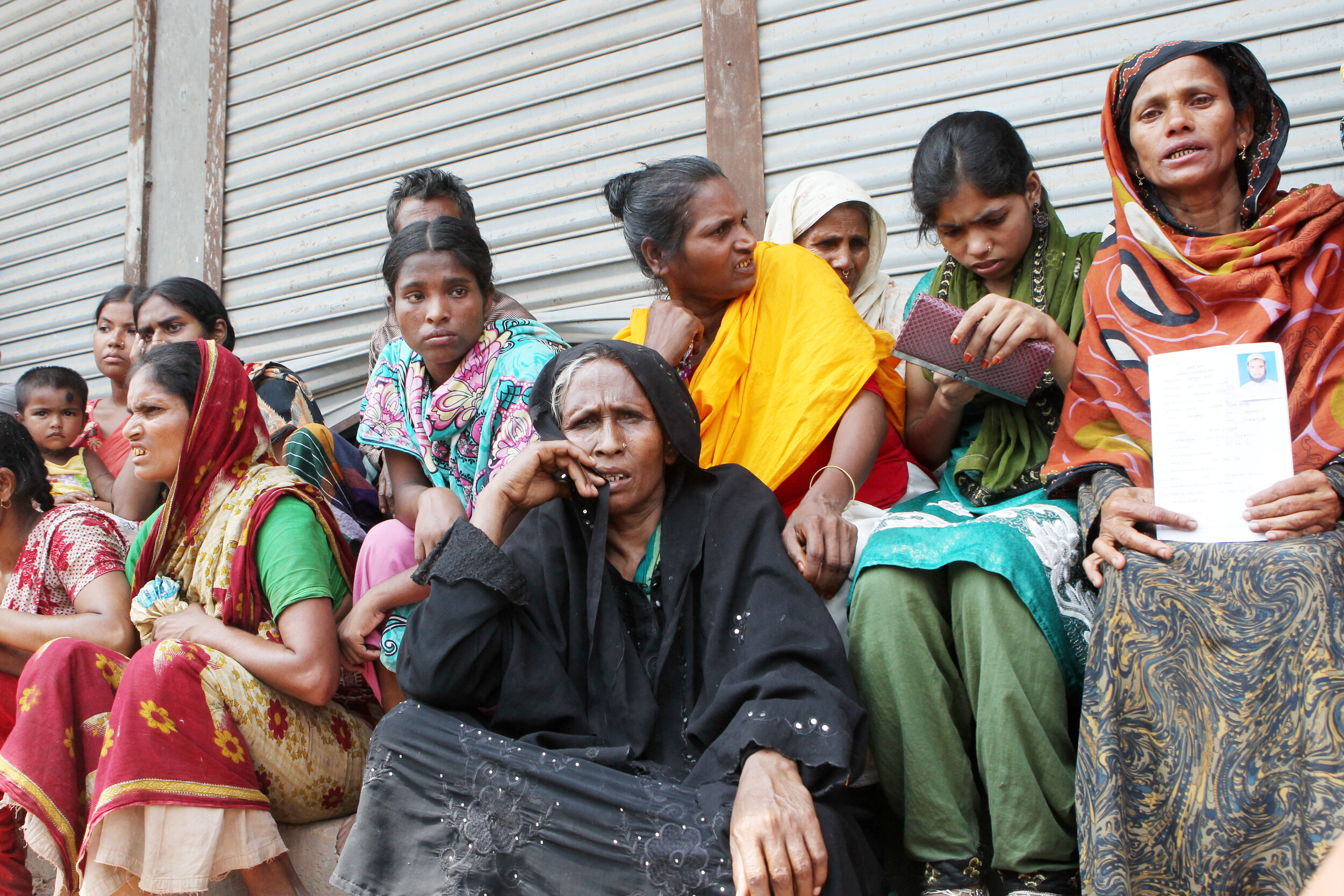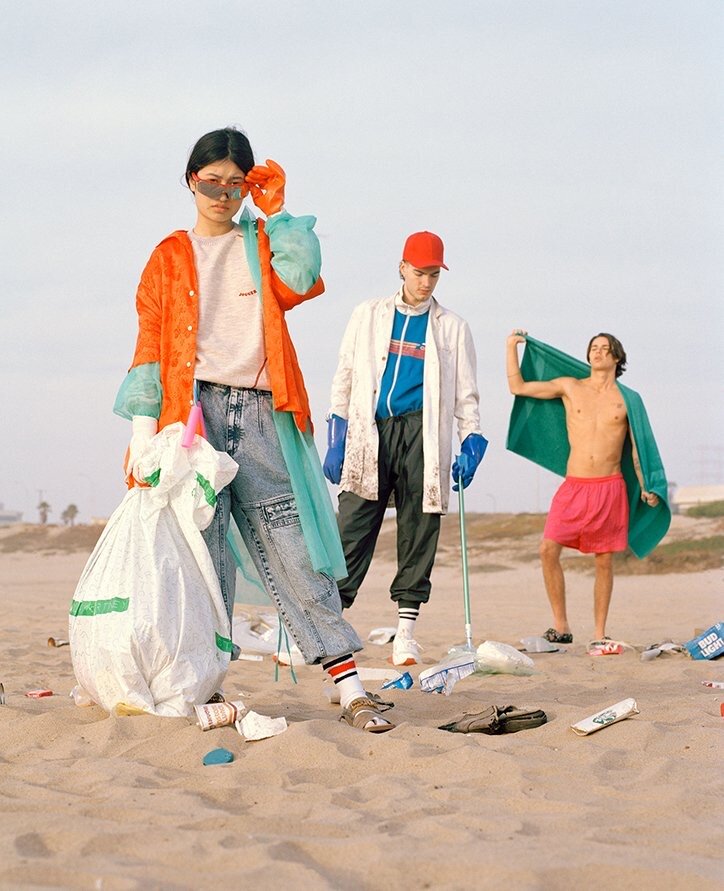
What Does Responsible Fashion Business Look Like?
The responsible choices brands and consumers can make for a more sustainable future.
By Dr Alana M James
For some time now, there has been demand for fashion brands to be more sustainable, more responsible in their business practices and more considerate of workers within the manufacturing of their goods. But in day-to-day business what does this actually mean? Unfortunately, there remains a lack of definition around some key terminology and also a lack of industry standardisation, which only adds to the level of confusion. This also leaves brands to freely interpret these values as they see fit. It is the scope of these parameters which begins to raise problems within a practical business sense, with ‘sustainability’ being implemented in multiple different ways, with varying levels of engagement. Furthermore, the way brands are publicly disclosing their sustainable actions can often lead to claims of greenwashing (where brands claim to be more sustainable than they really are for reputational and/or financial gain).
Just as with fashion brands, consumers find it hugely difficult to navigate the sustainable fashion paradox, often not knowing what choices to make for the best. What is better, organic or Fairtrade cotton? What does it mean if my top is made in Bangladesh? And why are some items deemed to be ‘eco-conscious’ and some not? Even for those of us with a keen interest in sustainability and fashion, these questions are complex and more often than not, do not have a definitive answer.
So, with many challenges facing the industry realisation and consumer perception of sustainability, what does responsible fashion business look like?
Corporate Social Responsibility (CSR)
Image from Shutterstock
When considering sustainability from a business perspective, this is often referred to as corporate social responsibility, or CSR for short, and has been broadly defined as a commitment to improve community wellbeing through discretionary business practices. However, once again, this definition lacks clarity and regulation, leaving this engagement open to individual interpretation. Issues covered by such terminology are also broad and diverse including both environmental and social aspects of the fashion industry. These can range from the development of carbon neutral factories at M&S to garment recycling initiatives in charity collaborations at H&M. Acting as an umbrella term, once again the consumer understanding of this concept can add to confusion and often a disengagement from important social and environmental concerns.
From a consumer perspective however, there are three key questions you can consider when it comes to making decisions about how sustainable your favourite fashion brand is:
TRANSPARENCY - How open and honest are they about their business practices?
TRACEABILITY - How much do we know about how and where their garments are made?
ACCOUNTABILITY - How much responsibility does the brand take for their actions?
How do brands communicate sustainability?
Being able to address these questions often relies on the amount of information made available to us by the brand themselves. The level in which brands publicly disclose this information is often a good indicator of how responsible their practices really are. This is starting to be acknowledged in the fashion industry, with many companies now including tools such as interactive supply chain maps on their websites, where people can find out details such as the location of their factories, what products are made there, and even details regarding the quantity and gender of their workers. Honesty and accountability, are the key messages being communicated when a brand engages in a system such as this, leading to a greater level of respect and brand trust with their customers. Campaigns such as ‘Who made my clothes?’ run by Fashion Revolution has encouraged consumers to question the people behind the label, again encouraging an increase in pressure on fashion brands to be more open and transparent about their supply chain.
“Where this balance has been successfully reached is when brands relate their sustainable values to their fashion products, making a direct connection to the garments themselves.”
Garment workers from the Rana Plaza disaster | Shutterstock
On the contrary however, brands also have to find a balance on how much information they provide and the way they also choose to do this. Too much, and an individual might switch off, too little, and they might think they have something to hide. Likewise, with the way in which they choose to publicise this information, which needs to engage and interest people but also not be too overwhelming or dull. Where this balance has been successfully reached is when brands relate their sustainable values to their fashion products, making a direct connection to the garments themselves. This not only retains the interest of their customers but also ensures that there is a strong relationship between responsible values in their business and the products that are being retailed. Other positive examples include the use of storytelling through garment worker diaries and highlighting different sustainable issues using relevant examples and initiatives.
How much is too much?
Disclosing high levels of information about a brands supply chain has often been met with a sense of reluctance, with many brands believing that their supplier information is of great value and should therefore not be made public. This is hardly surprising however, as an exposure in the media can be dangerous to brand reputation should an issue of non-compliance in their supply chain occur. Examples of this have been seen time and time again with the most recent showing key fast fashion retailers including Zara and ASOS to be using child labour in their clothing supply chain. This kind of exposure can heavily damage a brand’s reputation requiring years of recovery and rebuilding of public trust. An example of this reputational damage was seen in the early 2000s, where Gap and Nike were reported to have been using child labour in sweatshop conditions. Since this time, these brands have had to work tirelessly to not only turn their public image around, but to also ensure they use more responsible social practices in the manufacture of their goods.
“A lot of these choices also need a little common sense, can a t-shirt really be made for £3 while still being made responsibly? Probably not.”
How do I know if a brand is sustainable?
Photo by Joshua Rawson-Harris on Unsplash
As we know, understanding how to make sustainable choices as a fashion consumer can be really challenging. In addition to focusing on transparency, traceability and accountability, there are a number of ways we, as shoppers, can ensure our fashion purchases are made with minimal effect on people and the planet.
A really good starting point is to ask questions and to be engaged in the information that is available to us. Just as with Fashion Revolution’s campaign that urges us to ask how our clothes are made, it is also our responsibility to be inquisitive and to know a little more about where our garments come from, and how they were made. When buying from our favourite brands, we can look a little further into their sustainable practices and begin to engage in the information they make available through their website and retail stores. A lot of these choices also need a little common sense, can a t-shirt really be made for £3 while still being made responsibly? Probably not. To really begin to make a difference, the responsibility is not only on the brands themselves to be open and honest in their practices, but also on us as their customers. We need to ask the right questions, and be critical in the information given to us, only then will we begin to see a more responsible approach to fashion business in the future.
This article is part of a series written by Alana with a new sustainability issue discussed each month. Next up: The power of the consumer.
Related Articles.
Fashion’s Impact on our Oceans.
How does clothing pollute the Oceans? And what are some small changes we can make to have a positive impact as consumers, fashion industry professionals and brands.
Stories | By Emma Golley | 06.08.20
From Fast Fashion to Fair Fashion: Building a brand to combat a wasteful industry.
Founder and Creative Director, Jess McCleave, discusses how the obstacles she faced in the fast fashion industry led her to start her own ethical and sustainable label ILK+ ERNIE.
Stories | By Emma Golley | 08.12.20
Fashion’s Unsustainable Behaviour.
Dr Alana M James, a Senior Lecturer in Fashion at Northumbria University, provides an insight into the Fashion Industry’s many dirty habits and gives us an invaluable history lesson on how it got to this point.
Sustainability | By Dr Alana M James | 07.15.20







